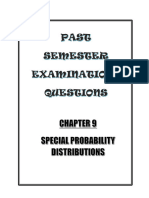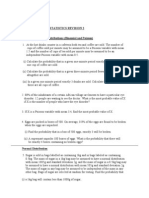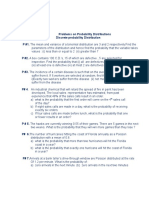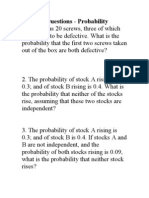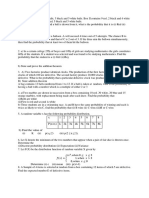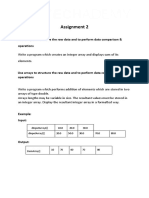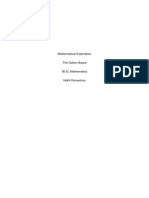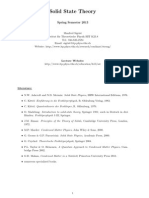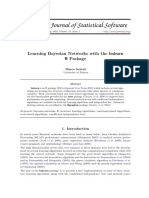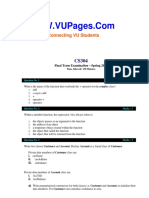0% found this document useful (0 votes)
18 views3 pagesTutorial Sheet 11 (Probability)
The document is a tutorial sheet for a MAT 1120 course focusing on probability, containing various problems related to events, probabilities, and distributions. It includes calculations for joint probabilities, conditional probabilities, and scenarios involving normal distributions and Poisson distributions. Additionally, it covers real-world applications such as disease exposure probabilities, chocolate selection, and examination scores.
Uploaded by
Arnold MumbaCopyright
© © All Rights Reserved
We take content rights seriously. If you suspect this is your content, claim it here.
Available Formats
Download as PDF, TXT or read online on Scribd
0% found this document useful (0 votes)
18 views3 pagesTutorial Sheet 11 (Probability)
The document is a tutorial sheet for a MAT 1120 course focusing on probability, containing various problems related to events, probabilities, and distributions. It includes calculations for joint probabilities, conditional probabilities, and scenarios involving normal distributions and Poisson distributions. Additionally, it covers real-world applications such as disease exposure probabilities, chocolate selection, and examination scores.
Uploaded by
Arnold MumbaCopyright
© © All Rights Reserved
We take content rights seriously. If you suspect this is your content, claim it here.
Available Formats
Download as PDF, TXT or read online on Scribd
/ 3




